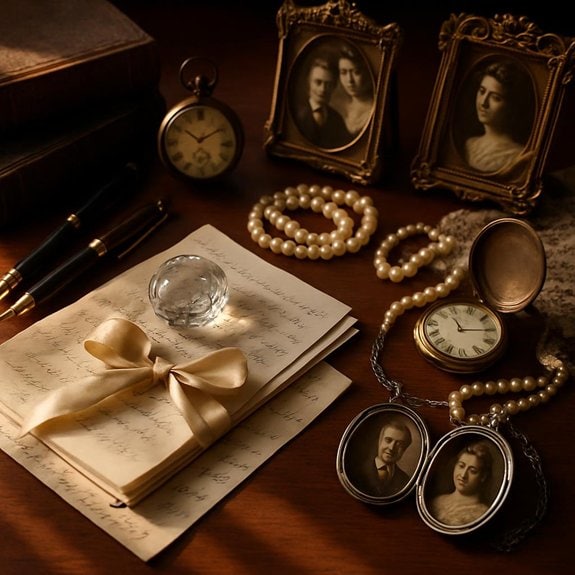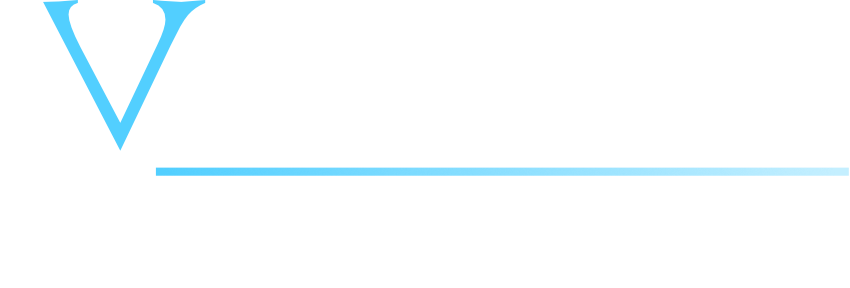
Your personal belongings carry emotional weight that transcends monetary value, yet without proper documentation in your Alberta will, these treasures might fracture family bonds instead of preserving them. You’ll need specific bequests, personal property memorandums, or executor discretion to guarantee meaningful objects reach intended recipients. Clear documentation transforms informal promises into binding instructions, while thoughtful planning honours both legal requirements and emotional connections, protecting relationships and intentions that matter most beyond your lifetime.
Understanding Specific Bequests for Personal Effects in Alberta
When you sit down to draft your will, the act of naming specific items for particular beneficiaries transforms mere objects into vessels of memory and meaning. Your grandmother’s pearl necklace, father’s vintage watch, or mother’s china set become bridges between generations, carrying stories and emotional weight far beyond their monetary value.
In Alberta, specific bequests allow you to honour these connections by directly designating who receives each treasured possession. You’re not merely distributing property; you’re weaving together the fabric of family legacy, ensuring that meaningful objects find their way to those who’ll cherish them most.
This deliberate act of naming and bequeathing creates clarity in your final wishes, preventing disputes while preserving the intimate bonds these objects represent.
Creating and Using a Personal Property Memorandum
Though a specific bequest carries weight and permanence, life’s shifting landscapes often call for flexibility in how you allocate your personal treasures.
Life’s shifting landscapes often call for flexibility in how you allocate your personal treasures.
A personal property memorandum, referenced within your will, offers this essential adaptability—allowing you to modify recipients of cherished belongings without formal will amendments.
This separate document becomes your living canvas, where you can thoughtfully reassign grandmother’s pearls or father’s watch as relationships evolve and new generations emerge.
Your executor will honour these written wishes, treating the memorandum as an extension of your declaration.
Executor Responsibilities When Distributing Personal Belongings
As you’ve entrusted your executor with the profound responsibility of carrying out your final wishes, they’ll bear the weight of fairness and precision when distributing your personal belongings among beneficiaries.
Their duties transcend mere administrative tasks—they become guardians of your legacy, creating detailed inventories that capture each item’s essence and value.
They’ll navigate the delicate balance between legal obligations and emotional sensitivities, ensuring every beneficiary receives their rightful inheritance while maintaining meticulous records.
When disputes arise over cherished heirlooms or meaningful possessions, your executor must embody both wisdom and impartiality.
Through transparent communication and careful documentation, they’ll honour your intentions while preserving family harmony—a sacred trust that transforms legal duty into an act of profound human service.
Common Mistakes in Personal Effects Distribution
While grief clouds judgment and emotions run high, families often stumble into predictable pitfalls that transform the distribution of personal effects into a battlefield of misunderstandings and broken relationships.
You’ll find that vague language becomes a weapon—when you write “divide my personal belongings equally,” you’re unknowingly planting seeds of discord over who determines equality’s meaning.
Your informal promises outside the will create competing narratives, each child clutching their version of truth like a lifeline.
The most devastating mistake emerges when you underestimate objects’ emotional weight—that worn watch carries generations of memory, yet you’ve left no instructions for its journey.
These oversights don’t merely complicate logistics; they fracture the very bonds you sought to preserve through inheritance.
Strategies for Preventing Family Disputes Over Sentimental Items
When you’re crafting strategies to prevent family disputes over sentimental items, you’re fundamentally building bridges across the inevitable chasms that death creates between those left behind.
Your most powerful tool isn’t legal precision—it’s transparency woven through every conversation you hold while still breathing. Consider creating a personal property memorandum that breathes with your voice, explaining not just who receives what, but why each cherished object carries its particular significance.
You’re orchestrating more than distribution; you’re composing a final symphony of meaning that resonates through generations. By photographing items alongside their stories, hosting family gatherings where preferences emerge naturally, and documenting these wishes formally, you transform potential battlegrounds into sacred spaces where memory and love converge, ensuring your legacy becomes connection rather than conflict.
Legal Requirements for Inventorying and Valuing Personal Property
Though the law’s requirements for inventorying and valuing personal property might seem like mere bureaucratic necessities, they serve as the final accounting of a life’s accumulated treasures—each documented item carrying weight far beyond its market value.
You’ll find Alberta law demands meticulous attention to these duties:
- Complete Asset Documentation: Every item of value must be photographed, catalogued, and described with specificity.
- Professional Appraisals: Items exceeding provincial thresholds require certified valuations for probate.
- Detailed Record-Keeping: Maintain thorough logs of all distributions, valuations, and beneficiary acknowledgments.
- Transparent Reporting: Share inventory documentation with all beneficiaries to guarantee fairness.
This legal framework transforms personal effects from mere possessions into properly accounted legacies, allowing your executor to honour both the letter of the law and the spirit of your intentions.
Best Practices for Documenting Your Personal Effects Wishes
Beyond the legal requirements lies a more personal imperative—the careful documentation of who should receive the objects that have shaped your daily existence and carried your memories through decades.
You’ll discover that precision in expressing your wishes transforms potential conflict into clarity, whether you’re detailing specific bequests within your will or crafting a separate personal property memorandum.
Consider photographing treasured items alongside written descriptions, noting their significance and intended recipients. This practice serves both practical and emotional purposes—it prevents ambiguity while preserving the stories these objects embody.
Through thoughtful documentation, you’re creating more than legal instructions; you’re weaving a narrative that guides your executor and honours the relationships these possessions represent, ensuring your intentions remain unmistakable when your voice can no longer speak them.
Handling Informal Family Agreements and Verbal Promises
As conversations echo through family gatherings and promises float across dinner tables, you’re witnessing the creation of an invisible web of expectations that can unravel an estate’s distribution faster than any legal challenge.
These informal agreements, however heartfelt, carry no legal weight against your written will’s provisions.
Consider these critical realities:
- Verbal promises to individual children don’t override formal documentation
- Conflicting family memories create disputes where none should exist
- Executors can’t honour informal agreements that contradict the will
- Unwritten understandings fragment families during grief’s raw moments
You must transform those meaningful conversations into legally binding instructions.
Whether through specific bequests or a referenced memorandum, formalize every promise you’ve made. Your loved ones deserve clarity that transcends memory’s imperfections, ensuring peace prevails when words can no longer be spoken.
Alternative Methods for Distributing Collections and Heirlooms
Three distinct pathways emerge when you’re contemplating how treasured collections and family heirlooms will find their rightful homes after you’ve departed.
You might craft specific bequests within your will’s formal structure, naming each cherished piece alongside its intended recipient.
Alternatively, you could reference a separate memorandum—a living document that breathes with your changing intentions, allowing flexibility as relationships evolve and perspectives shift.
The third path involves granting your executor discretionary power, trusting their judgment to honour your unspoken wishes and family dynamics.
Each method carries its own weight of responsibility and possibility. Your choice shapes not merely the physical journey of objects, but the emotional inheritance you leave behind—determining whether your treasures become sources of connection or contention among those you’ve loved.
When to Seek Legal Guidance for Personal Effects Planning
The moment arrives when your contemplative planning encounters the intricate web of Alberta’s legal requirements, and you recognize that your good intentions need the framework of professional expertise.
Your carefully considered wishes for cherished belongings deserve translation into legally binding language that withstands time’s inevitable challenges.
Consider seeking estate law guidance when:
- Multiple beneficiaries share conflicting memories about promised items
- Valuable collections require specialized valuation or distribution strategies
- Family dynamics suggest potential disputes over sentimental objects
- Complex memorandums need integration with your will’s formal structure
The intersection of emotion and law demands careful navigation.
When personal effects carry both monetary and sentimental weight, professional counsel guarantees your legacy unfolds as intended, protecting relationships while honouring your deepest intentions for those you’ll leave behind.

We currently have three offices across Alberta — Edmonton, Calgary, and Red Deer. However, we serve the entire province of Alberta. We also have the infrastructure to work with any of our clients virtually — even the furthest regions of Alberta.
Call us toll-free at 1-877-448-3131 to get routed to the best office for you or contact us online to schedule an appointment.
We also have a dedicated intake form to help you get the ball rolling. Our intake team will review your specific case and advise you on the next steps to take and what to expect moving forward.
Our offices are generally open 8:30 a.m.—5:00 p.m., Mon—Fri.


Lauren Eckstein
WILLS and ESTATES LAWYER
Lauren has focused her practice on Wills and Estates, including Adult Guardianship and Trusteeship matters. She offers comprehensive legal services in trust and estate planning, estate administration, and estate litigation.

